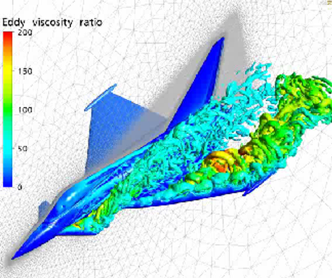Computational Fluid Dynamics
Computational fluid dynamics - CFD is a branch of fluid technicalities that uses numerical analysis and data structures to solve and examine problems that involve in fluid flows.
We all know that computers are used to perform the calculations required to create the communication of liquids and gases with surfaces defined by boundary conditions. By using high-speed supercomputers you can achieve better solutions. While the ongoing research yields of software improves the accuracy and speed of complex simulation scenarios such as transonic or confused flows. The early experimental corroboration of such software is performed using a wind tunnel with the final validation impending in full-scale testing. The primary source of almost all CFD troubles is the Navier–Stokes equations, which describe many single-phase (gas or liquid, but not both) fluid flows. These equations can be simplified by removing terms describing viscous actions to give way the Euler equations. Further simplification, by removing terms recounting vortices yields the full potential equations. Finally, for small perturbations in subsonic and supersonic flows these equations can be linearized to yield the linearized possible equations.
Traditionally, methods were first developed to solve these linearized latent equations, then two-dimensional (2D) methods, using conformal transformation of the flow about a cylinder to the flow about an airfoil were developed in early 1930s.

One of the initial type of calculations similar to modern CFD are those by Lewis Fry Richardson, these calculations used finite differences and divided the physical space in cells. Though they failed considerably, these calculations, together with Richardson's book "Weather prediction by numerical process", set the basis for modern CFD and numerical meteorology. In fact, near the beginning CFD calculations during the 1940s using ENIAC used methods close to those in Richardson's 1922 book.
Computational fluid dynamics has been around since the early of the 20th century and most of the people are familiar with it as a tool for analyzing air flow around cars and aircraft. Being the cooling infrastructure of server rooms has increased in complexity, CFD has also become a useful tool in the data center to analyze the thermal properties and modeling air flow. CFD software require information about the size, content and layout of the data center. It uses this information to create a 3D mathematical model on a grid that can be rotated and viewed from different angles. CFD modeling can help an administrator identify hot spots and learn where cold air is being wasted or air is mixing.
Simply by varying the variables, the administrator can imagine how cold air will flow through the data center under a number of dissimilar situation. This knowledge can help the administrator optimize the competence of an existing cooling infrastructure and predict the effectiveness of a particular layout of IT equipment. For example, if an administrator wanted to take one rack of hard drive storage and split the hard drives over two racks, a CFD program could replicate the change and help the administrator understand what adjustment would be need to be made to deal with the additional heat load before any time or money has been spent.






